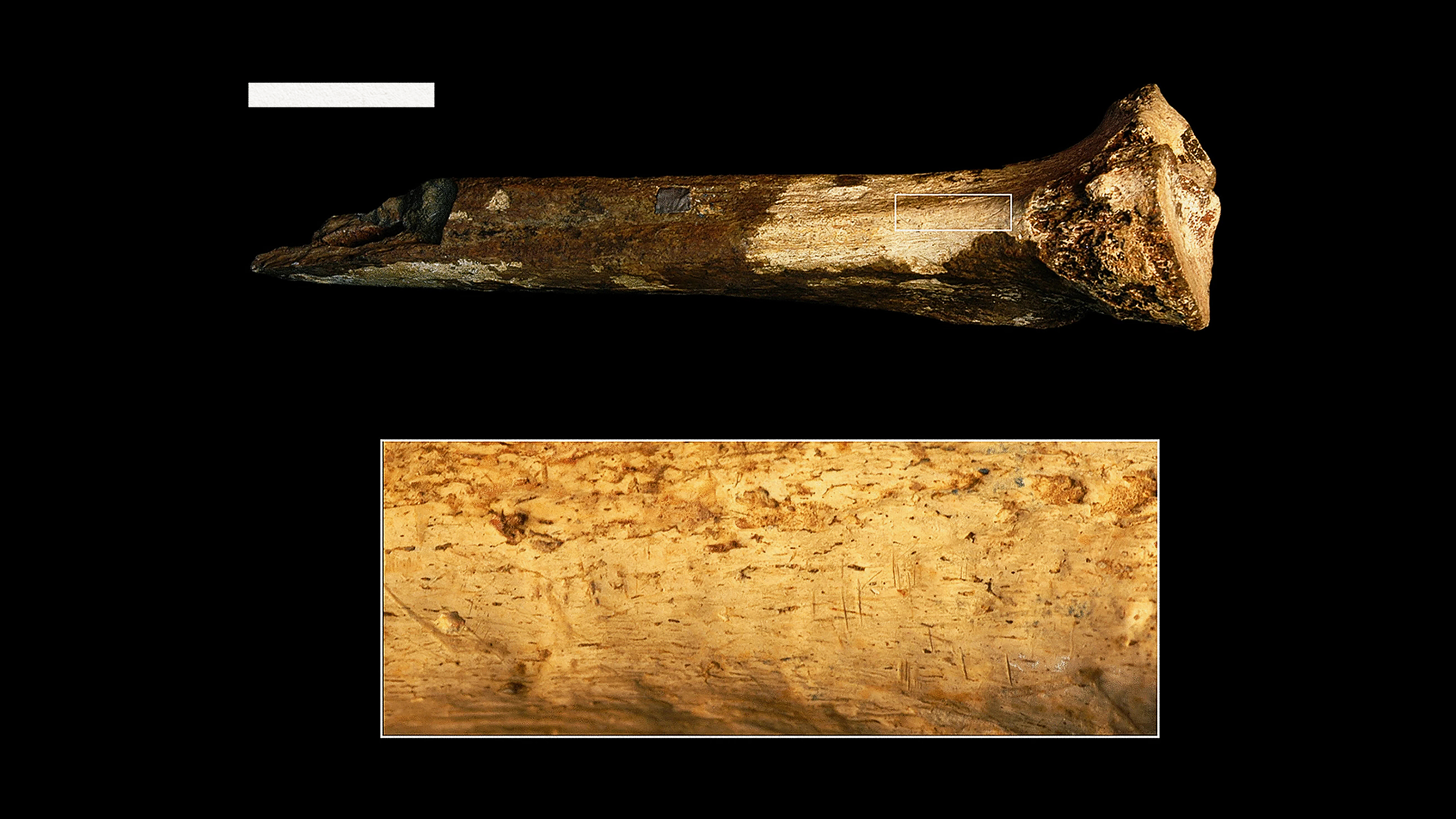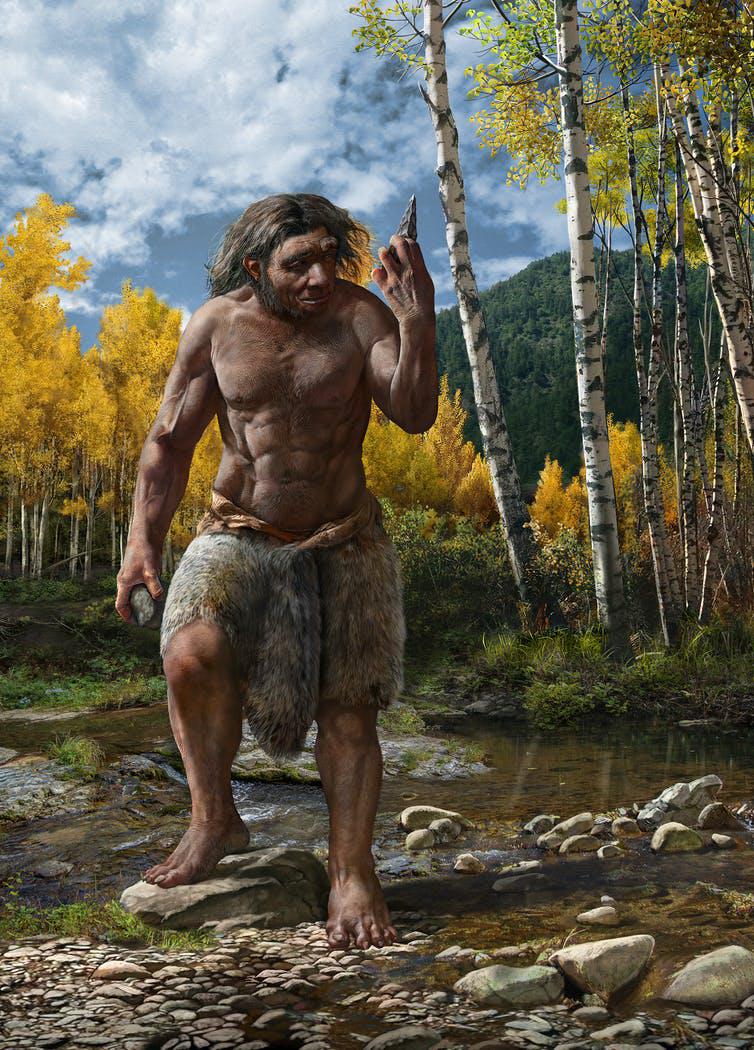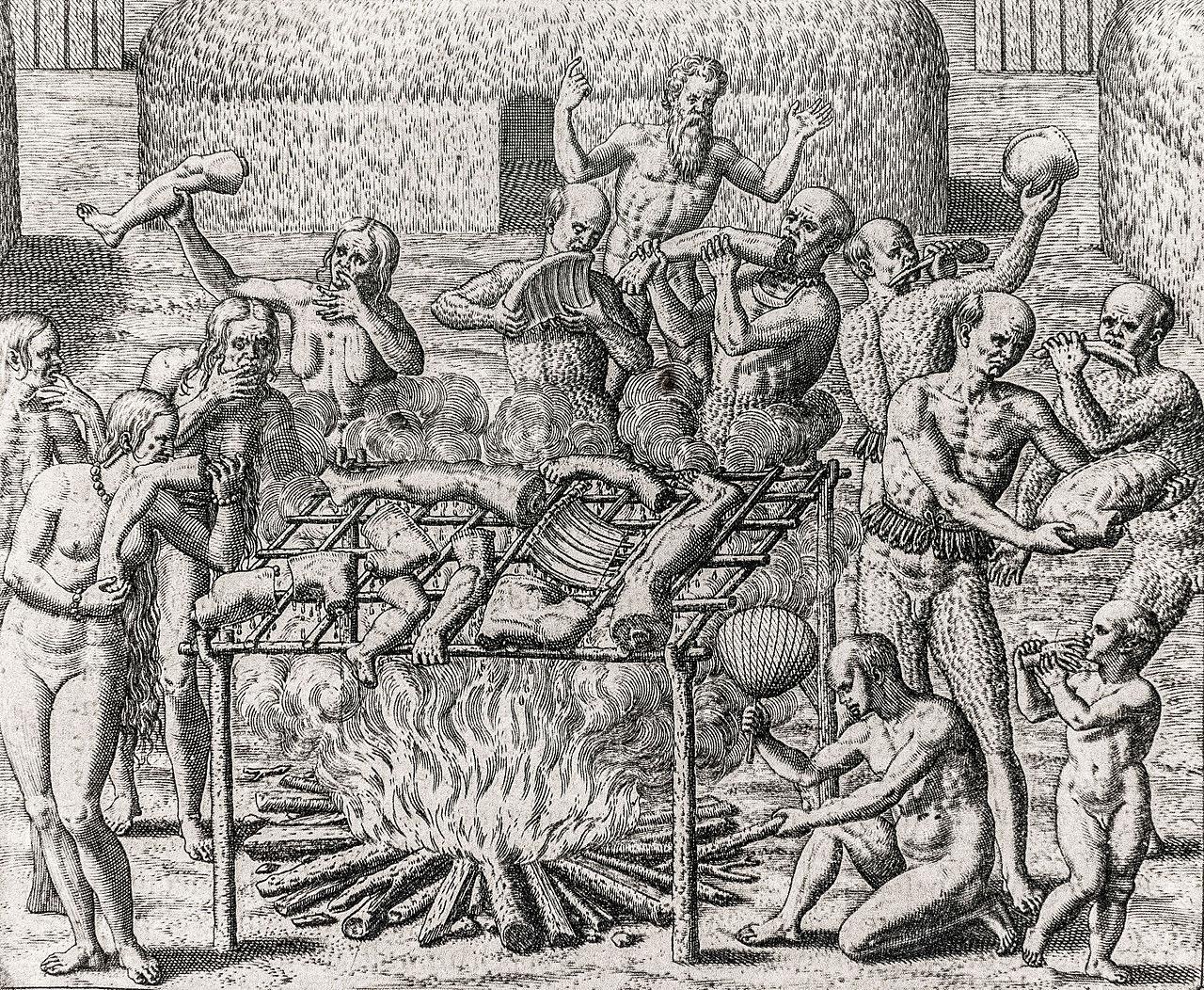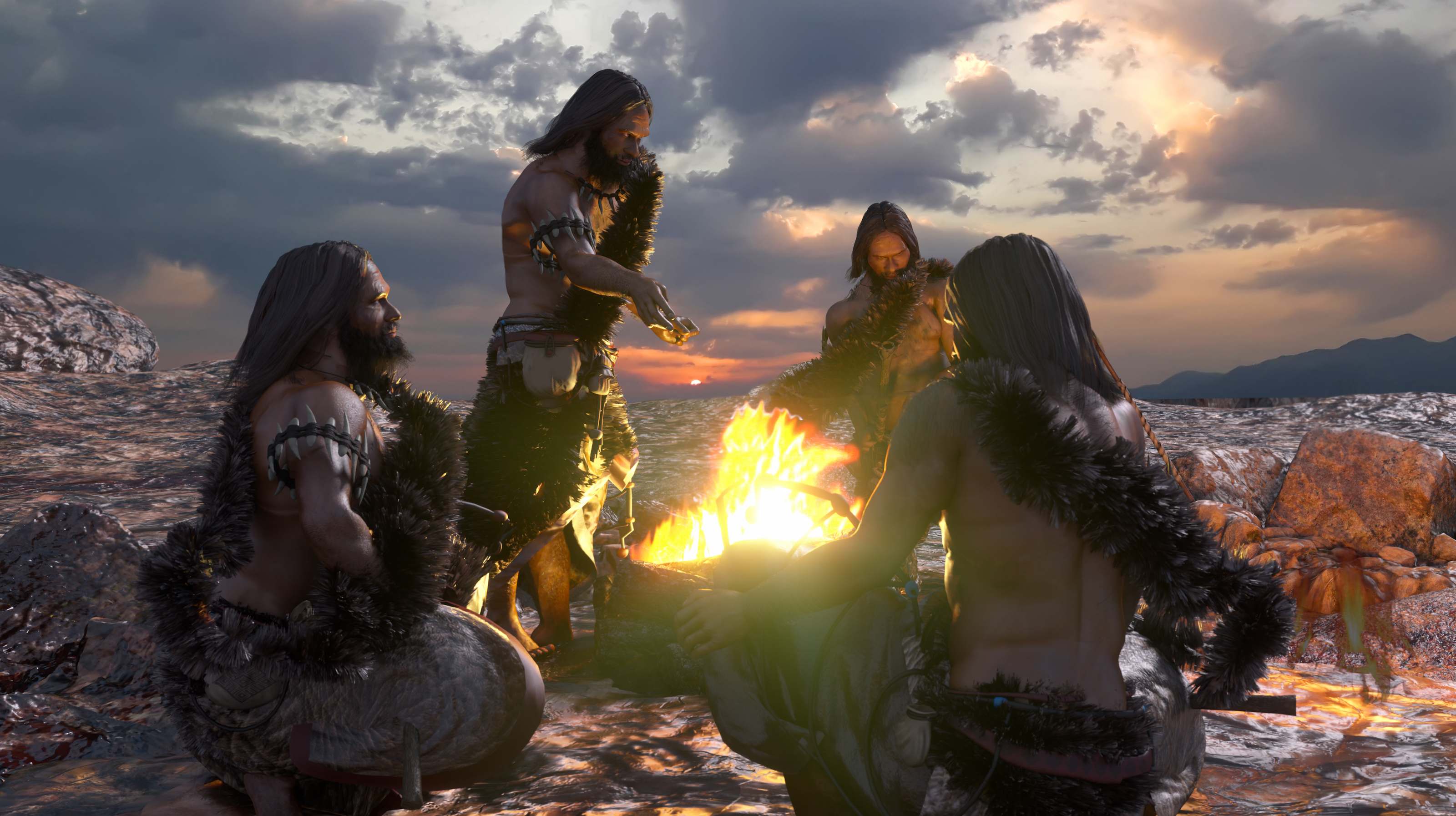Found: One of the earliest signs of ancient human cannibalism

- Researchers uncover human-made cut marks on the tibia of a 1.5-million-year-old hominin, providing one of the earliest signs of cannibalism in human history.
- The findings present compelling evidence of cannibalistic practices, but the scientists cannot be certain that the victim and the butcher were members of the same species of ancient humans.
- Skepticism persists among some scientists who question the claims of cannibalism.
Scientific progress occasionally owes its advancements to serendipitous discoveries. Researchers, originally motivated to validate a particular hypothesis or explore a specific question, often find themselves unraveling threads that lead them to an entirely different story.
In 2017, Briana Pobiner, a distinguished paleoanthropologist from the Smithsonian’s National Museum of Natural History, visited the Nairobi branch of Kenya’s National Museum of History with a clear objective in mind. With expertise in bone markings, Pobiner was looking for chew marks or tooth imprints on hominin fossils, aiming to find evidence of our ancestors’ encounters with the formidable predators they coexisted with, like lions, crocodiles, and raptors.
Armed with a magnifying glass, Pobiner meticulously examined hominin fossils from the early Pleistocene (2.5 million to 800,000 years ago), searching for clues of a classic predator-prey interaction etched in time. When she examined a single hominin tibia, a specimen named “KNM-ER 741,” she counted 11 unique markings. They were straight, deliberate, and perpendicular to the long axis of the bone, clustered near where the calf muscles attach to the bone. In fact, they looked a lot like markings she had seen on the bones of ancient fauna that humans hunted and ate.
These weren’t the marks of a big cat, or evidence of raptor claws piercing bone. Instead, they were the telltale sign of another, perhaps more ferocious predator: other ancient hominins. The finding was published in the journal Scientific Reports.
Ancient human cannibalism
Famed British paleoanthropologist, Mary Leakey, discovered the tibia bone that became KNM-ER 741 in the Turkana region of northern modern-day Kenya. However, scientists cannot identify the species based on a single bone. While Pobiner was not the first to reexamine KNM-ER 741, she was the first to notice the butchery marks. After her discovery, she made a dental molding of the marks and sent them to her colleagues Michael Pante and Trevor Keevil. She didn’t tell them about her theory; instead, she simply asked them to come to an independent conclusion on the source of the markings.
Pante generated 3D images from the moldings and used a statistical model to compare them against a collection of 898 different bone markings attributed to various stone tools, predators, or abrasion. The model identified two of the eleven marks as tooth marks from flesh-specialist carnivores, most likely a lion. The model classified the remaining nine as human-cut marks, with six of them likely being produced by a stone tool. The authors dismissed any speculation that these markings occurred after fossilization (perhaps from damage during the excavation) because they were the same color as the surrounding bone and are therefore probably as old as the specimen itself.
Identifying the cut marks answered one question, but it raised a more troubling one: Why are they there? The obvious answer is cannibalism, and if this is correct, the 1.5-million-year-old specimen would represent some of the earliest evidence of cannibalism in hominins. However, this is not definitive. During the Pleistocene period, at least three hominin species coexisted in modern-day Kenya: Paranthropus boisei, Homo erectus, and Homo habilis. Because the scientists cannot precisely identify if the predator and prey were of the same species, it may not be cannibalism, as strictly defined.
Cannibalism in history
Cannibalism is abundant in nature, occurring in at least 1,300 species, including some primates. There is good evidence that ancient humans partook in the practice. Neanderthals likely practiced cannibalism throughout what is now Europe, as did ancient Homo sapiens in what is now Ethiopia, Poland, and the UK.
Cannibalism can stem from different motivations. Some instances involve acts of affection, while others are part of ritualistic funeral rites. Of course, there are cases of cannibalism driven by nutritional necessity during intense times of scarcity. In some cases, the reasons are gastronomic — in other words, hominins were simply regular items on the menu for other hominins.
When examining bones for potential evidence of cannibalism, researchers must distinguish “disarticulating” from “defleshing.” Disarticulation — removing or separating bones at the joints, presumably for transport or burial — leaves larger, deeper, and less precise cut marks. Defleshing, on the other hand, involves smaller cuts located close to where muscle attaches to bone, suggesting that the purpose was for removal of the muscle and consumption.
So, what happened to KNM-ER 741? The presence of lion tooth marks suggests that the hominin was either scavenged by humans after an encounter with the big cat or vice versa. Also, the location of the marks indicates a deliberate effort to extract muscle, suggesting that hominins tried to remove the muscles. Together, the evidence leads the authors to suggest that “if [cannibalism] did occur after the defleshing of KNM-ER 741, it was an opportunistic, practical, and functional activity which occurred simply in the context of obtaining food, rather than one imbued with ritual meaning.”
A bone to pick
Not all experts agree that such conclusions can be made from mere cut marks on a single bone. In 2000, scientists suggested cannibalism as the motivation for purported cut marks on a fossil between 2.6 and 1.8 million years old, predating KNM-ER 741. However, subsequent assessments concluded that these marks resulted from natural processes rather than hominin butchery.
Peter Bullock, a renowned anthropologist known for challenging claims of cannibalism in ancient societies, expressed his skepticism. The retired anthropologist told the New York Times, “Cannibalism is usually the sexy interpretation, and one I spent a lot of energy discounting. Why not a murder victim or the result of an autistic humanoid doing self-harm? Prove that’s not possible.”





